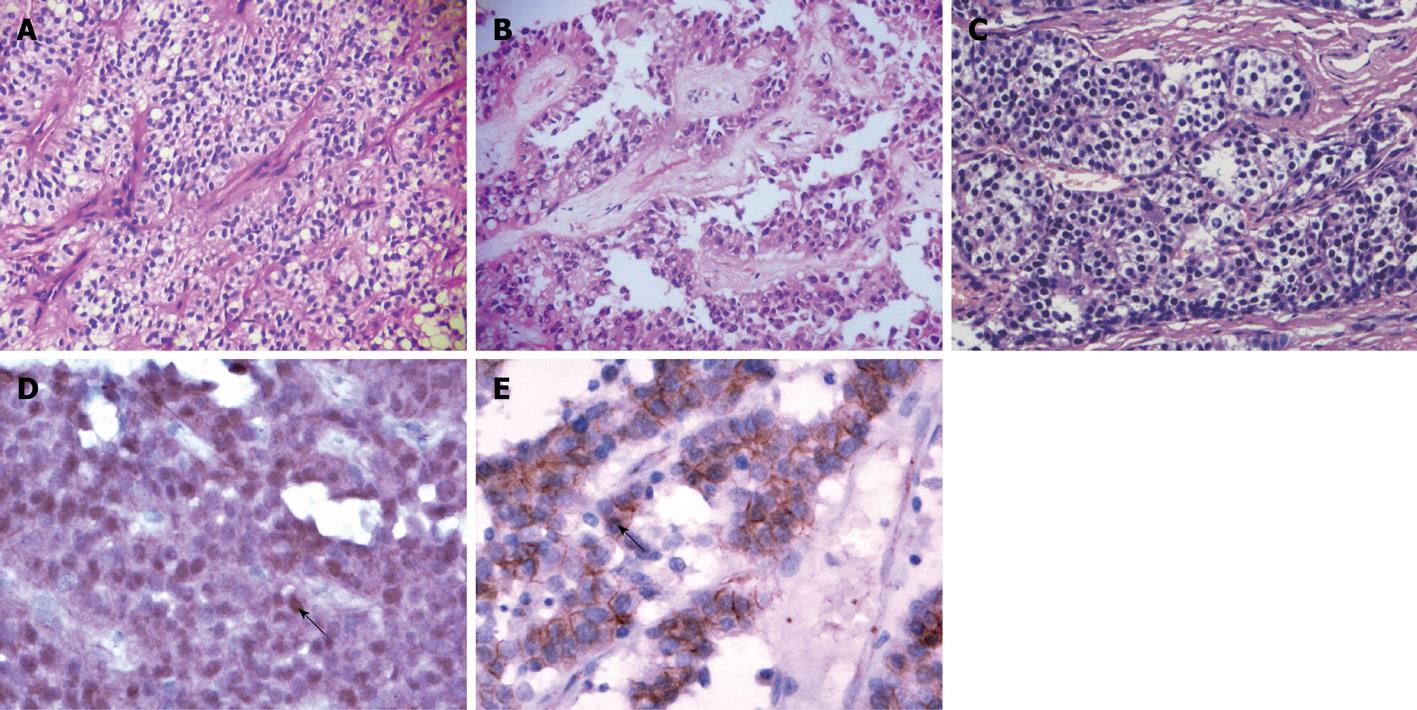Copyright
©2010 Baishideng.
World J Gastroenterol. Feb 28, 2010; 16(8): 1025-1030
Published online Feb 28, 2010. doi: 10.3748/wjg.v16.i8.1025
Published online Feb 28, 2010. doi: 10.3748/wjg.v16.i8.1025
Figure 1 Histopathological and immunohistochemical features of solid-pseudopapillary neoplasm (SPN) and pancreatic endocrine tumor (PET).
A: SPN arranged in solid areas, patternless sheets of uniform epithelial cells with numerous small blood vessels (hematoxylin-eosin, original magnification × 200); B: SPN formed characteristic pseudopapillary changes due to the degenerative and discohesive nature of the tumor cells (hematoxylin-eosin, original magnification × 200); C: PET arranged in acinar-like pattern; the tumor cells are small and round with granular eosinophilic or clear cytoplasm (hematoxylin-eosin, original magnification × 200); D: β-catenin immunostaining of SPN: Nuclear translocation and accumulation of β-catenin protein (arrow) is seen in neoplastic epithelial cells (original magnification × 200); E: β-catenin immunostaining of PET: Membrane and cytoplasmic positive expression of β-catenin protein without nuclear stain (arrow) (original magnification × 200).
- Citation: Liu BA, Li ZM, Su ZS, She XL. Pathological differential diagnosis of solid-pseudopapillary neoplasm and endocrine tumors of the pancreas. World J Gastroenterol 2010; 16(8): 1025-1030
- URL: https://www.wjgnet.com/1007-9327/full/v16/i8/1025.htm
- DOI: https://dx.doi.org/10.3748/wjg.v16.i8.1025









